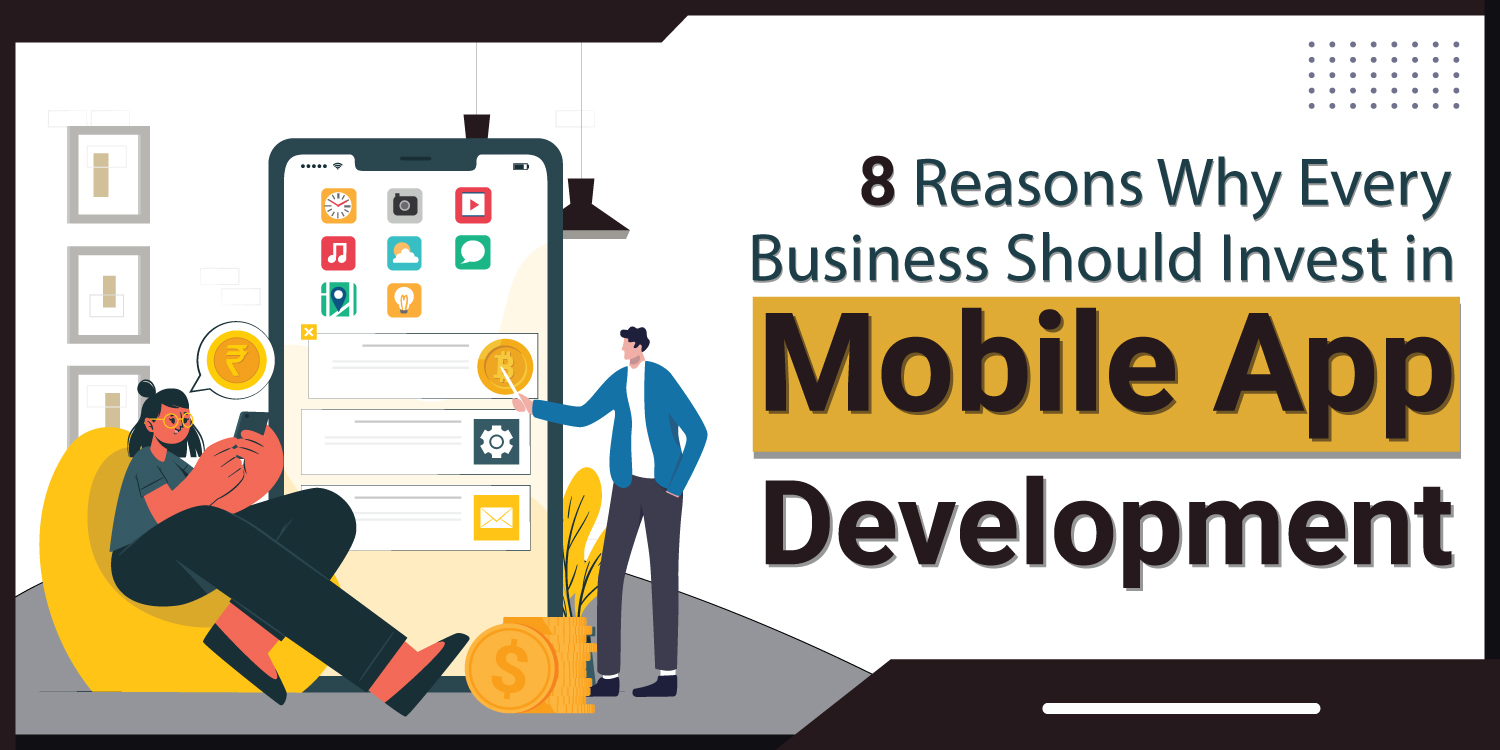Whether you are creating a small piece of software or a big enterprise-grade project, software development methodologies are essential to set everything in order. Any software development roadmap will be a sum of many different stages- from creating mockups to the final product launch.
But the effectiveness of this roadmap is mostly determined by the software development methodologies used (yes you can use more than one methodology for a project- it’s called hybrid). So what are these methodologies and how do you choose the right one?
We will answer all this and more in this blog. We will also discuss the 7 stages of software development life cycle. Let’s get started then!
Table of Contents
ToggleSoftware Development Methodologies: Why do they matter?
A blueprint is the first thing we need to build a house. Similarly, developers and designers also need to figure out the project development process. They use different methodologies for different project needs. Think of it as a step-by-step guide that streamlines the development process, while helping development teams avoid any surprises.
So why do software development methodologies matter?
- They keep things organized.
- They clearly define roles and scope.
- They help identify and avoid potential risks or threats
- They make project management less burdensome and more efficient.
- Last but not least, software development methodologies create a predictable workflow, saving time and resources.
The Big Two: Agile vs Waterfall
In software development, Agile and Waterfall are the main players. Let’s see what they’re about and which might suit your project better.
Agile Methodology: Flexible and Fast
Think of constantly getting feedback from the users and making changes as you go. That’s what makes Agile a favourite among developers.
Core Principles: Embrace change and deliver usable software in short bursts.
Key Features:
- Iterative Development: Split the project into small chunks called “sprints” and focus on specific features each time.
- Quick Sprints: Speedy development means quick feedback and room to adjust.
- User Feedback: Agile relies on input from users throughout, making sure the end product hits the mark.
Benefits of Agile:
- Flexibility: Can adapt easily to changes.
- Speedy Development: Gets features out fast through continuous cycles.
- Customer-Centric: Puts software user satisfaction first.
Drawbacks of Agile:
- Lots of Changes: Constant evolution can be a lot to handle.
- Less Upfront Planning: Lack of detailed planning upfront can be tough for complex projects.
Read Also: Everything You Should Know About Healthcare App Development
Waterfall Methodology: Step-by-Step Structure
This is the more traditional method- kind of building your software product brick by brick, following a plan. That’s Waterfall.
Core Principal: Each stage (planning, design, development, testing, deployment) happens one after the other.
Key Features:
- Structured Approach: Offers a clear roadmap and a set order for development.
- Detailed Documentation: This keeps everyone on the same page at each stage.
Benefits of Waterfall:
- Clear Roadmap: Gives a full view of the project from the start.
- Predictable Timelines: Makes it easier to estimate project timelines and deadlines.
- Easy Progress Tracking: Clear milestones make monitoring progress simple.
Drawbacks of Waterfall:
- Less Flexible: Adapting to changes can be tough.
- Slow Response to Change: New ideas or feedback might slow things down.
- Limited User Input: Users get their say later, which could mean more rework.
Find the right software development approach for your project.
Get a quote for free!
Beyond Agile and Waterfall: Exploring Other Methodologies
While Agile and Waterfall are the big names, there’s a whole toolbox of approaches out there. Here are a few other popular options:
DevOps:
This method focuses on teamwork between development and operations teams. It breaks down barriers and keeps development, testing, and deployment flowing smoothly. Great for projects needing frequent updates.
Lean Startup:
Opt for this if you need everything fast- prototyping, testing, and learning. If your project has a lot of uncertainties, this methodology will help you refine ideas quicker and better. And, once you are certain, you can go ahead with the final development.
Rapid Application Development (RAD):
If you need a simple MVP first and then build the product later, RAD could be your best friend. With faster user input and short cycles, you can get a working product to users quickly.RAD is ideal if the project has clear requirements and a need for speed.
Choosing the Right Methodology for Your Project
Choosing the right methodology for your project can be simplified by considering a few key factors:
- Project Size and Complexity:
- Agile: Great for smaller, less complex projects.
- Waterfall: Ideal for larger, more intricate projects.
- Team Structure:
- Agile: Best suited for teams that thrive on collaboration and adaptability.
- Waterfall: Works well with clearly defined roles and responsibilities.
- Client Needs:
- Agile: Preferred by clients who want to be closely involved, offering frequent feedback loops throughout the project.
- Waterfall: Preferred by clients who prioritize predictability, providing clear timelines and firm deadlines from the outset.
The above is a good comparison to have when choosing between Agile and Waterfall. But what if you want to choose between the 5 software development methodologies mentioned in his blog?
Here’s a tabular breakdown to help you make the right choice:
| Aspect | Agile | Waterfall | DevOps | Lean Startup | RAD |
| Team Collaboration | High | Low | High | Moderate | High |
| Flexibility | High | Low | Moderate | High | High |
| Client Feedback | Constant | Minimal | Moderate | High | Moderate |
| Development Speed | Iterative | Sequential | Continuous | Fast | Fast |
| Deployment Frequency | Variable | Low | High | Moderate | High |
| Focus on User Needs | High | Low | Moderate | High | High |
| Suitability for Uncertainty | Moderate | Low | Moderate | High | Low |
| Documentation | Minimal | Extensive | Moderate | Minimal | Moderate |
Understanding 7 Stages of Software Development Life Cycle
Now each of the software development methodologies discussed above has some common stages, also known as the Software Development Life Cycle (SDLC). Generally, the SDLC cycle has 7 stages:
- Planning and Requirements Gathering
- Design and Prototyping
- Development and Implementation
- Testing and Quality Assurance
- Deployment and Release
- Maintenance and Support
- Feedback and Iteration
Summing Up!
So, with that, it’s a wrap-up for this blog. We hope you are now well-informed about SDLC methodologies, as well as the key factors that differentiate one from the other.
Most software development services use these methodologies. At DreamSoft4U we choose a method based on the client’s requirements and project goals. Our methodology can be hybrid too- where we use a mix of two or more methodologies.
For instance, if you are a startup outsourcing software development to us, then we suggest a mix of AGILE and LEAN methodology. Here’s what it looks like:
- Planning: Focus on core MVP features and gather basic user needs (think quick surveys).
- Prototyping: Build rough mockups to test core functionalities and user interaction. Refine based on feedback.
- Development: With a clearer picture, build the MVP focused on core features, but allow some flexibility for adjustments.
- Testing & Release: Release the MVP to a limited audience and test core functionalities.
- Feedback & Iteration: Analyze feedback to see if the core idea works. Decide to iterate, pivot, or move on to a full product.
This is just one example of the different custom or hybrid SDLC methodologies we offer to our clients. Get a software project quote for free. Visit our Contact Us page and let’s discuss your requirements.
FAQs
Q1: SDLC in DevOps: What does it look like?
DevOps SDLC is similar to agile but benefits from a whole lot of automation. Here’s what a typical DevOps SDLC looks like:
- Planning: Like Agile, divide the project into smaller parts.
- Development: Use automated tools to develop simultaneously.
- Testing: Quickly find issues with automated testing.
- Release: Keep software fresh with frequent automated updates.
- Maintenance: Use monitoring tools to spot and fix problems early.
- Feedback: Gather feedback from different places to make things better.
Q2: What is the cost of developing an app using Agile?
Agile is now the go-to methodology for software development. However consistent iterations can multiply your app development costs significantly. That’s why it is essential to hire the right software development companies. To get a fair estimate, talk to one of our experts now.
Q3: Do all software development companies use Agile?
Yes, Agile and Waterfall are standard SDLC methodologies, So, it should not be a surprise if all software development companies use the AGILE approach today.























